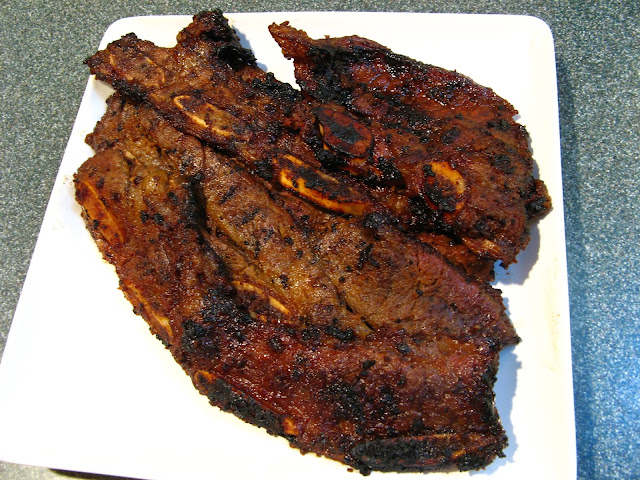This recipe is really a version of twice cooked pork using honeycomb
beef tripe, rather than pork belly or stomach. My previous recipes, Twice
Cooked Pork with Fish Cake and Fuzzy Melon (節瓜魚片回鍋肉,
Zit3 Gwaa1 Jyu4 Pin3 Wui4
Wo1 Juk6) and Doubanjiang
Pork Stomach with Green String Beans (辣豆瓣酱青豆角豬肚,
Laat6 Dau6 Faan6 Zoeng3 Ceng1
Dau6 Gok3 Zyu1 Tou5), thinly
sliced pork belly or pork belly is stir fried after it had been boiled. The
same technique, using beef tripe instead, is used to make this dish. Doubanjiang,
a spicy fermented broad bean paste, is the basis for the sauce. Broad beans are
fermented with spices and red chilies to produce this paste. The more famous
producers are based in Sichuan Province in the People’s Republic of China.
Broad beans are not soy beans, so soy bean based pastes does not have the same
flavor as Doubanjiang. The Doubanjiang is first stir fried to bring out the
flavor before adding and stir frying with the beef tripe. The sauce should look
dry, so there’s not a lot of liquid.
Enjoy!






